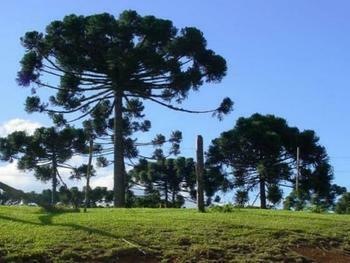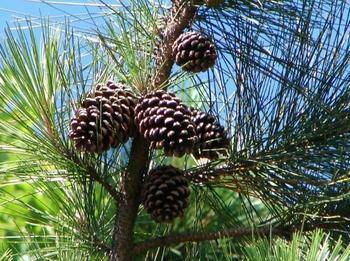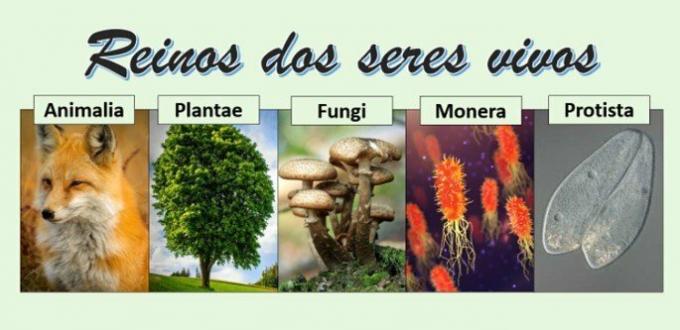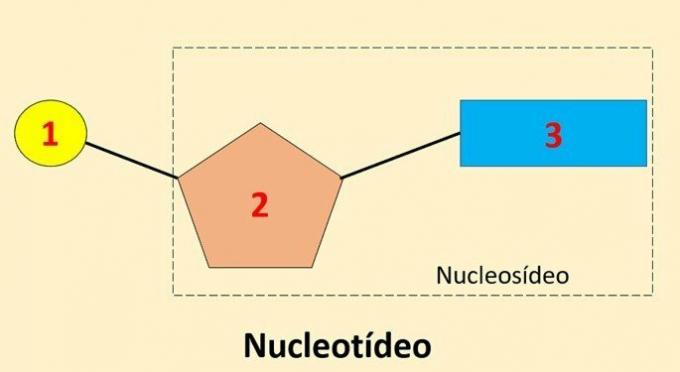Gymnosperms are land plants that have seeds but do not produce fruit.
The group name is derived from the Greek words gymmos "naked" and sperma "seed", that is, it means naked seed. This is because the seeds of gymnosperms are not found inside the fruits, being exposed or bare.
Examples of gymnosperms are araucarias, cedars, cypresses, cypresses, pine trees and redwoods.

Araucaria
In general, these plants adapt better to cooler, temperate climates. There are believed to be around 750 species of gymnosperms.
Features
Gymnosperm plants have roots, stems, leaves and seeds. There are no flowers and fruits. They also have conductive vessels, xylem and phloem.
The development of seeds and pollen grain was a great evolutionary achievement of gymnosperms. This fact made the plants definitively dominate the terrestrial environment, as they became independent of water for fertilization.
Currently, this group of plants can be found in various types of environments. An example is the Paraná pine or araucaria, which can be found in the Araucaria Forest, in southern Brazil.
Reproductive Structure
The reproductive structure of gymnosperms is the strobile, also known as cone, hence the coniferous name for gymnosperms.
The strobiles are formed by modified leaves that group together and form this structure. These leaves are fertile and do not carry out photosynthesis.

strobile
Strobiles can be male or female. This allows gymnosperms to be either monoecious or dioecious. When monoecious they have male and female strobiles. When dioecious they have only one type of strobile.
You male strobiles, also called microstrobiles, are small. In its interior, male spores (microspores) are produced through microsporangia.
You female strobiles, also called megastrobiles, are larger and popularly known as pine cones. They produce the female spores (megaspores) through megasporangia.
Life cycle
To understand the life cycle of gymnosperms, let's consider the example of a pine tree, a typical representative of this group.
At the time of reproduction, the leaves change and originate male strobiles (microstrobiles) and female strobiles (megastrobiles). Remember that some species can have male or female strobiles, they are dioecious.
Megaspores are produced by meiosis in megastrobiles. They are retained in the megasporangia, where they develop inside the egg and give rise to the female gametophyte. From the female gametophyte, two or more archegons appear, in each one an oosphere, the female gamete, is differentiated.
In microstrobiles, microsporangia produce, through meiosis, microspores. From these microspores arise the pollen grains, also called male gametophytes. They are stored in the microstrobile until released into the air.
At this moment, the pollination carried by the wind (anemophilic). Pollen grains travel through the air until they find the opening of the egg. When this happens, they germinate and give rise to the pollen tube that grows and reaches the archegon. This enables the male gametes to fertilize the oosphere and give rise to the zygote.
From this process arises the pinion, which is the seed, that is, the bearer of the fertilized egg, the embryo.
Angiosperms
At angiosperms they are also land plants. The big difference between angiosperms and gymnosperms is in relation to structure. Angiosperms have flower and fruit. This causes its seed to be protected by the fruit, which is not the case with gymnosperms.
Thus, angiosperms are complex plants that have roots, stems, leaves, flowers, fruits and seeds.
Learn more, read also:
- plant kingdom
- Botany: the study of plants



